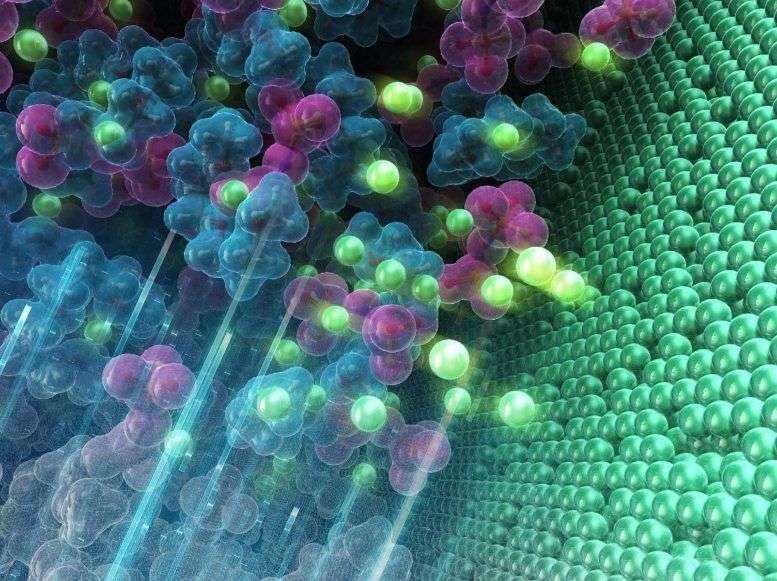Electrolitos de próxima generación para baterías de metal de litio de alta densidad de energía

Scientists know that if they improve the stability of the solid electrolyte interphase, then they can slow the electrolyte decomposition and the battery’s Coulombic efficiency is increased. But even with advanced technologies, scientists find it difficult to analyze the solid electrolyte interphase chemistry directly. Most of the studies about the solid electrolyte interphase have been conducted with indirect methodologies. These studies provide indirect evidence, therefore making it hard to develop the electrolyte-stabilizing lithium metal that leads to a high Coulombic efficiency.
The research team determined that if they could upshift the oxidation-reduction potential of the lithium metal in a specific electrolyte system, they could decrease the thermodynamic driving force to reduce the electrolyte, and thus achieve a higher Coulombic efficiency. This strategy had rarely been applied in developing batteries with lithium metal. “The thermodynamic oxidation-reduction potential of lithium metal, which varies significantly depending on the electrolytes, is a simple yet overlooked factor that influences the lithium metal battery performance,” said Atsuo Yamada.
The team studied the oxidation-reduction potential of lithium metal in 74 types of electrolytes. The researchers introduced a compound called ferrocene into all the electrolytes as an IUPAC (International Union of Pure and Applied Chemistry)-recommended internal standard for electrode potentials. The team proved that there is a correlation between the oxidation-reduction potential of lithium metal and the Coulombic efficiency. They obtained the high Coulombic efficiency with the upshifted oxidation-reduction potential of lithium metal.
Looking ahead to future work, the research team’s goal is to unveil the rational mechanism behind the oxidation-reduction potential shift in more detail. “We will design the electrolyte guaranteeing a Coulombic efficiency of greater than 99.95%. The Coulombic efficiency of lithium metal is less than 99%, even with advanced electrolytes. However, at least 99.95% is required for the commercialization of lithium metal-based batteries,” said Atsuo Yamada.
Referencia: "El potencial del electrodo influye en la reversibilidad de los ánodos de metal de litio" 27 de octubre de 2022, Nature Energy.
DOI: 10.1038/s41560-022-01144-0
Este estudio se llevó a cabo en colaboración con el Instituto de Tecnología de Nagoya.
Financiamiento: Programa de Investigación y Desarrollo de Tecnologías Avanzadas Bajas en Carbono; Investigación especialmente promovida para baterías innovadoras de próxima generación de la Agencia de Ciencia y Tecnología de Japón; JSPS KAKENHI Investigación especialmente promovida; y el Programa del Ministerio de Educación, Cultura, Deportes, Ciencia y Tecnología: Proyecto de Investigación y Desarrollo de Materiales Tipo de Utilización y Creación de Datos financió esta investigación.
Por UNIVERSIDAD DE TOKIO 27 DE OCTUBRE DE 2022










